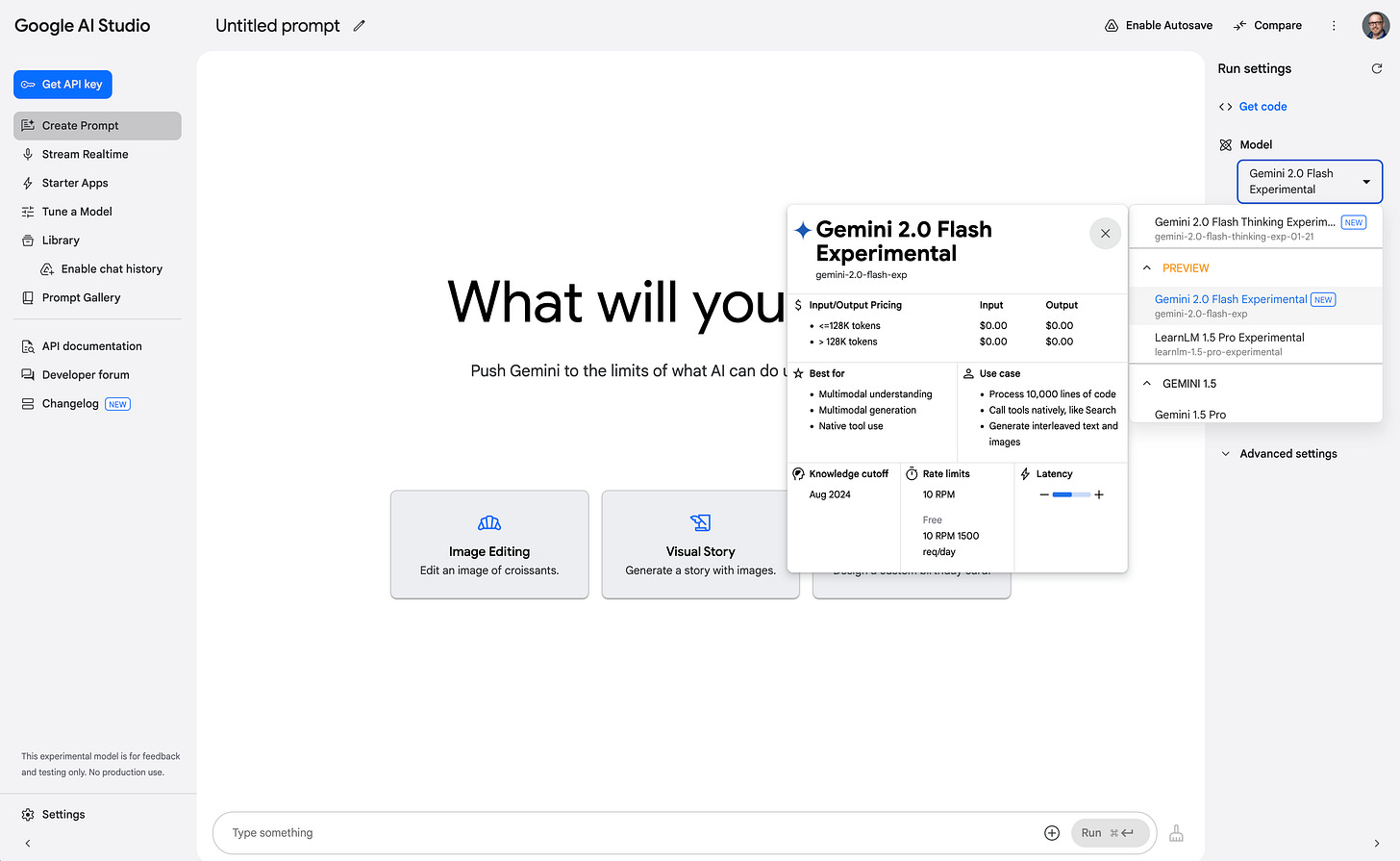178: Do you really want to be an artist?
AI can't yet make you an artist, but it's trying; Google AI Studio 2.0 Flash Experimental
There’s the common criticism of minimalist art, in essence, “I could make that.” And the equally common retort, “But you didn’t.” Because you probably aren’t too keen on experiencing everything it took to make that work of art.
Art making has a price.
It’s emotional, it’s connected to ego, it’s weird.
Even now, even in the age of AI where, as we’ve noted, “you don’t need need to be an artist to make art; not anymore.”
But that doesn’t mean you will.
As the analyst Benedict Evans explained in his March 9 column (bolding mine), “the other side of making creative tools cheaper, more accessible, and more powerful is that you need someone creative to tell the tool what to do. I can ask Runway or Midjourney for images, but what images, and which results do I choose? I can buy the same camera that Cartier-Bresson used, and go to the same places, but I won’t get the same pictures.”
Do you know what you want?
As Bob Lefsetz wrote recently, “Artistry is elusive, unquantifiable. And society hates this, but loves what is produced.”
So on the one hand we want art, and AI appears to allow more people to more easily make more art. But pretty soon we realize the AI output isn’t all that.
Because, as Evans continues,
“The fundamental nature of generative AI is in matching the average. It says ‘what would most people probably say here?’ The score is ‘how well does this match the average?' which means, really, how well it matches the mediocre.”
No one wants to make mediocre art.
Problem is, an AI doesn’t know the difference. Which I suspect most people sense, if they haven’t confirmed outright.
Or as Springboards Co-Founder/CEO Pip Bingemann puts it in this interview with Rosie and Faris at Strands of Genius,
“AI isn’t the enemy—boring is.”
Here’s a useful video of Bingemann, himself an agency strategist, talking with the strategist and educator Julian Cole about building an AI-powered creativity platform; with the underlying premise not to look to AI for the answer, look to it instead, for inspiration.
At this point, art worth noticing, worth talking about, worth the investment, still takes talent—even if aided by an AI. At this point, an AI can give you mediocre talent. Alas, you’re looking for a leap, a magic button that turns you into Picasso, or better—without all the cost it takes to get to that level.
But it just doesn’t exist.
Yet.
Google AI Studio 2.0 Flash Experimental
[Hat tip to
for talking about this on TikTok.] In the flurry of releases which no one can keep up on or keep track of, Google has launched an LLM with profound image generation and editing capabilities.You access Flash 2.0 Experimental from the Model drop down, under Preview.
Remember, this is the worse the tool will ever be! I’m very impressed with this model’s approach to photography, its ability to realistically represent something like a drum set, and the way it retains consistency across images even as it changes camera angle. And then you can edit type.
Of course it’s not perfect. Of course it makes errors like spelling. But you can see how fast and far we’ve come with these types of technologies in roughly two years—and you can get a sense of where this tech will go.
AI+Creativity Update
🎙️ Ashley Rutstein has a fabulous Stuff About Advertising podcast episode on Influential Women in Advertising that just came out (Apple, Spotify).
😎 Vibes Design – “Design by feel, not by pixels.” You knew it was coming; and it will speed up concept prototyping of all sorts. It’s designing systems, logos, UX, layouts (and of course applications) by prompt, by your “vibes.” Or as Jakob Nielsen defines it, “In vibe coding, the human focuses on what the software should do, while the AI figures out how to do it in code.” He continues:
“Simply having working features is no longer a differentiator: the quality of the experience will set products apart. In a vibe coding future, companies will hopefully invest more in understanding user needs, refining the interface, and polishing details that delight users, because those are harder for AI to get right without guidance.”
But remember, as Nate Jones reminds us, “The quality of the output depends heavily on how you guide the AI. Skillful prompting is required to get good results.” Ethan Mollick has a similarly useful rundown on vibes coding, and this new world where, as Andrej Karpathy put it, “the hottest new programming language is English.”
🚫🤖 According to Teen Vogue, “the data shows that the majority of teenagers are still not using AI in their assignments (though, of course, self-reported studies are sometimes not entirely accurate).”
🤮🤖 Something about having taste. Sam Altman suggested a yet-to-be-released version of ChatGPT is “good at creative writing,” because it, “got the vibe of metafiction so right.” (FYI, metafiction is, “a form of fiction that emphasizes its own narrative structure,” according to Wikipedia.) Oh, Sam. “Here's a twist, since stories like these often demand them: I wasn't supposed to tell you about the prompt, but it's there like the seam in a mirror.” Or as a creative director at Cannes put it back in 2023, “mediocrity is now free.” Or worse.
🐟🤖 Putting a conversational AI inside a Billy Bass talking fish is genius. As the Neuron suggests, AI-powered toys seem poised to be the real breakout idea.






